Fabrication of Crack-Free Barium Titanate Thin Film with High Dielectric Constant Using Sub-Micrometric Scale Layer-by-Layer E-Jet Deposition
Abstract
:1. Introduction
2. Experimental Details
2.1. Preparation of the BTO Slurry
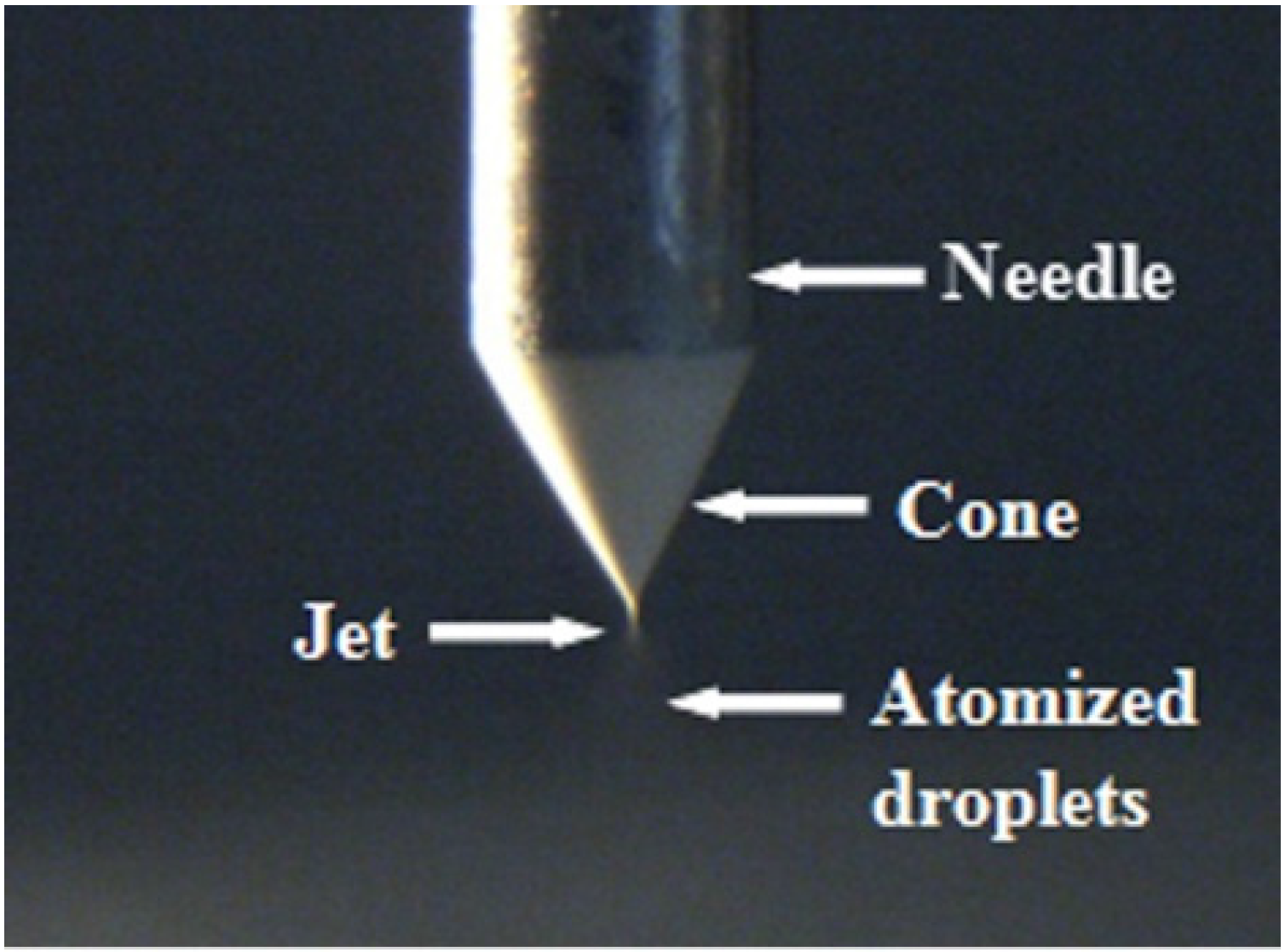
| Properties | Density ρ/(kg·m−3) | Viscosity µ/(mPa·s) | Surface Tension σ/(N·m−1) | Conductivity K/(S·m−1) |
|---|---|---|---|---|
| BTO slurry | 1.53 × 103 | 6.980 | 2.539 × 10−2 | 3.794 × 10−2 |
2.2. Thin Film Deposition
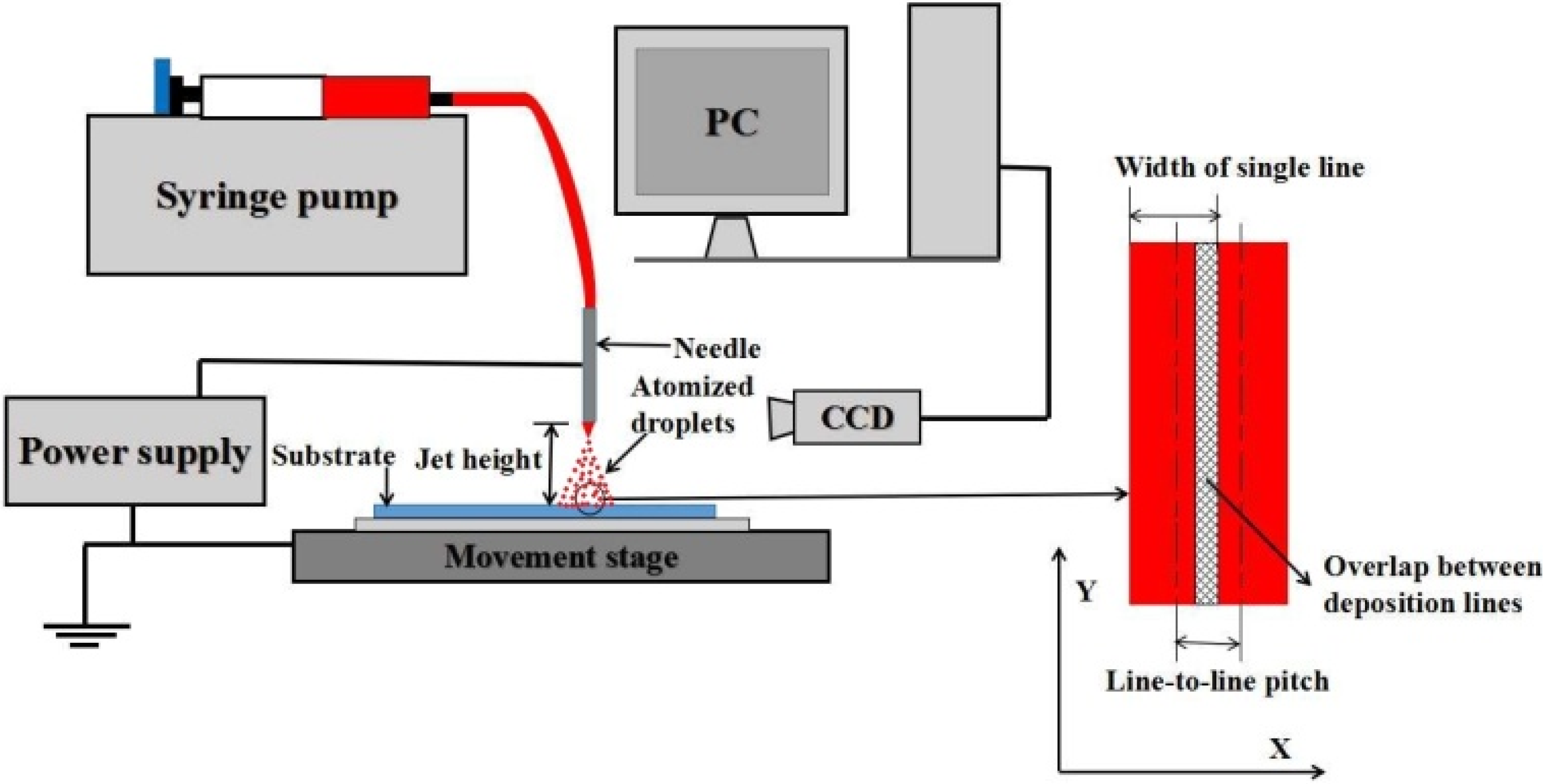
3. Results and Discussion
3.1. Influence of Jet Height
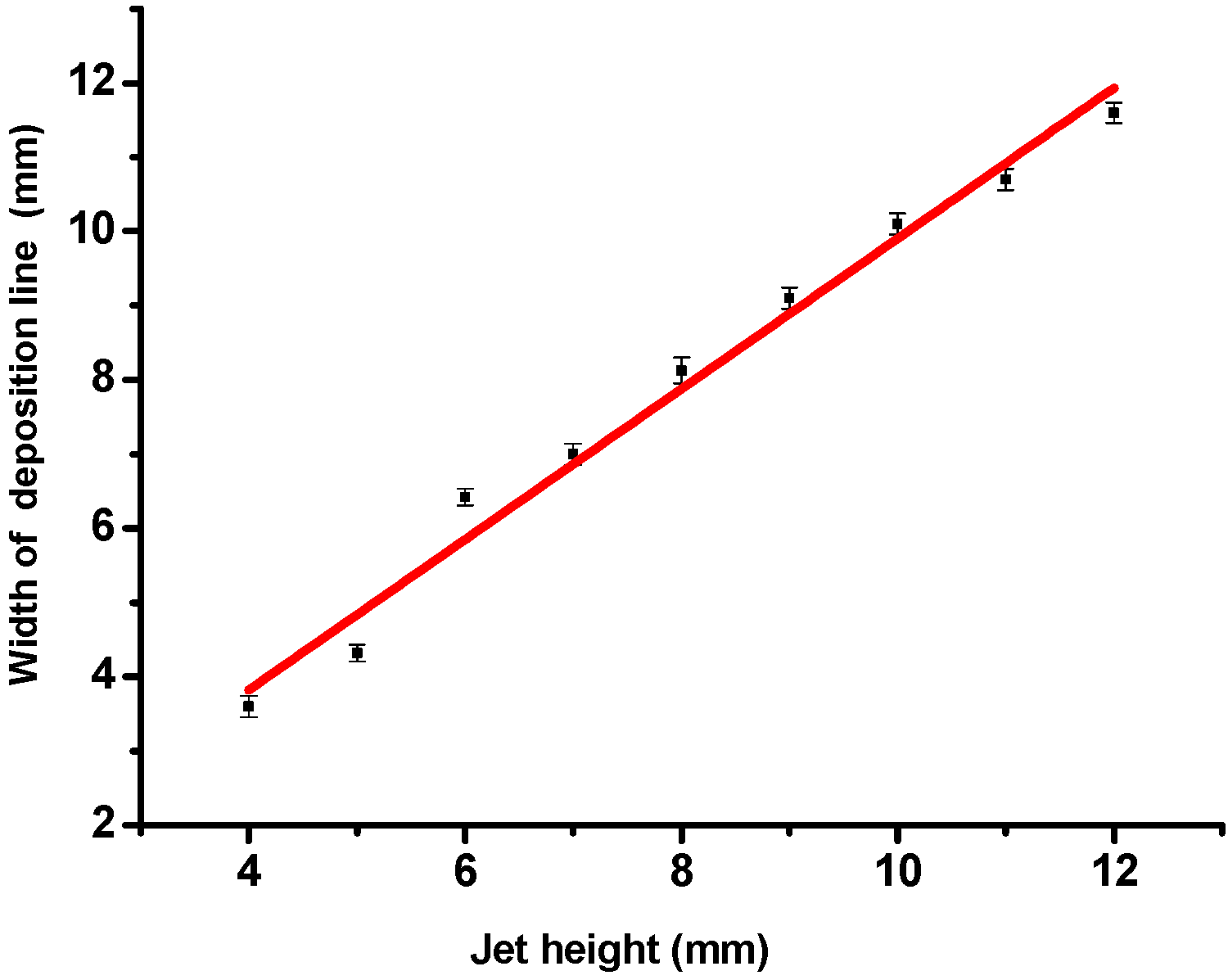
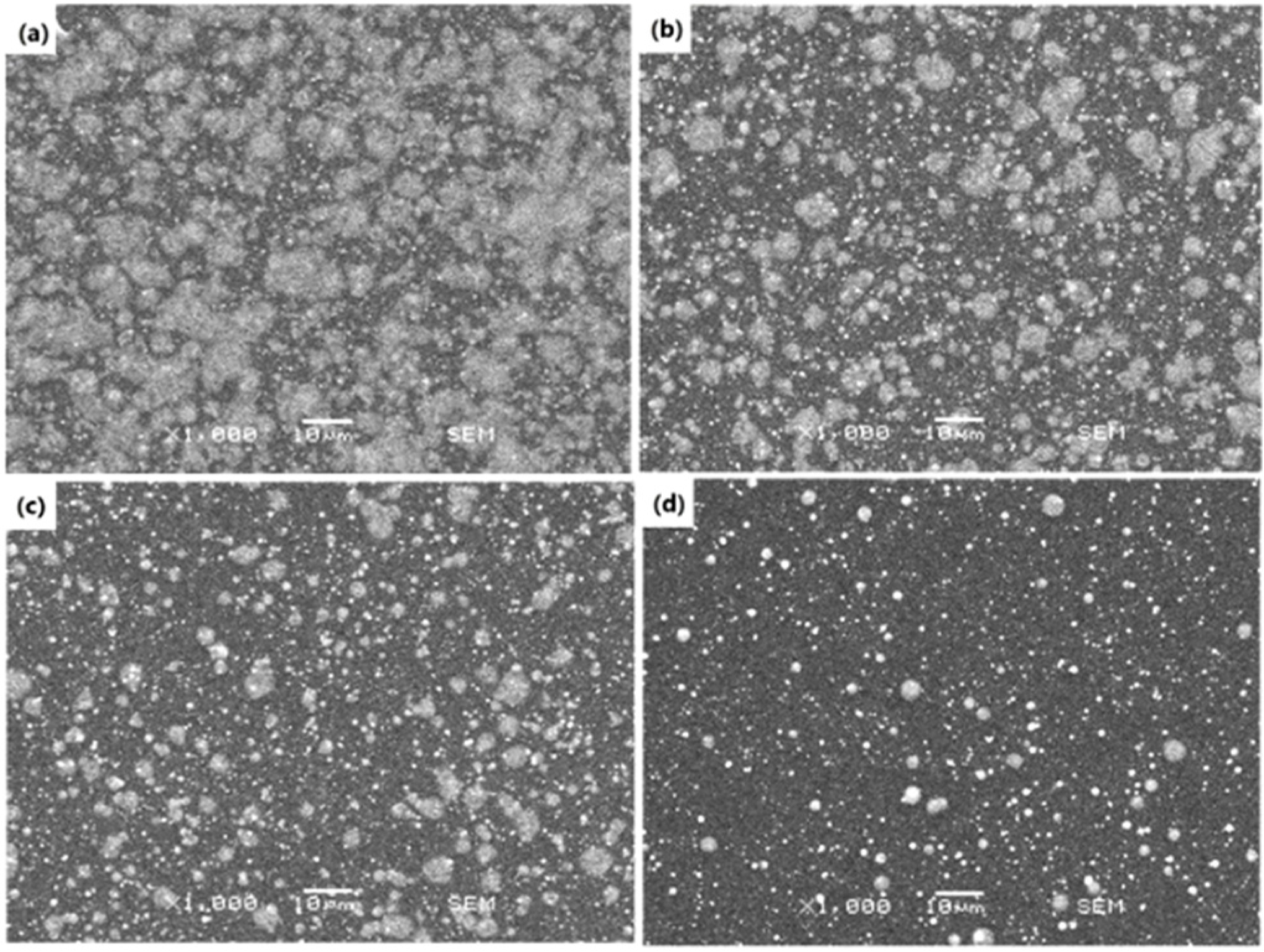
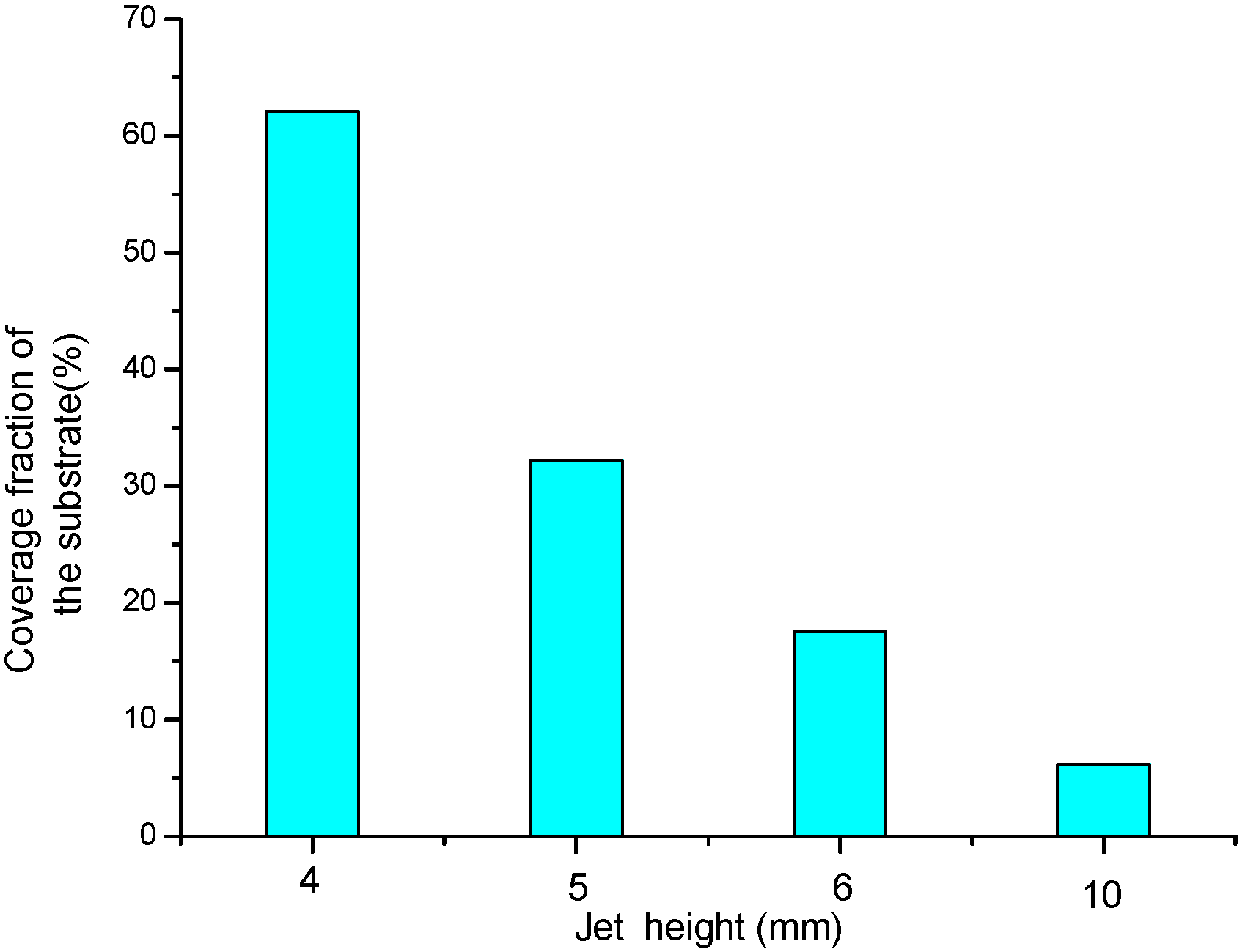
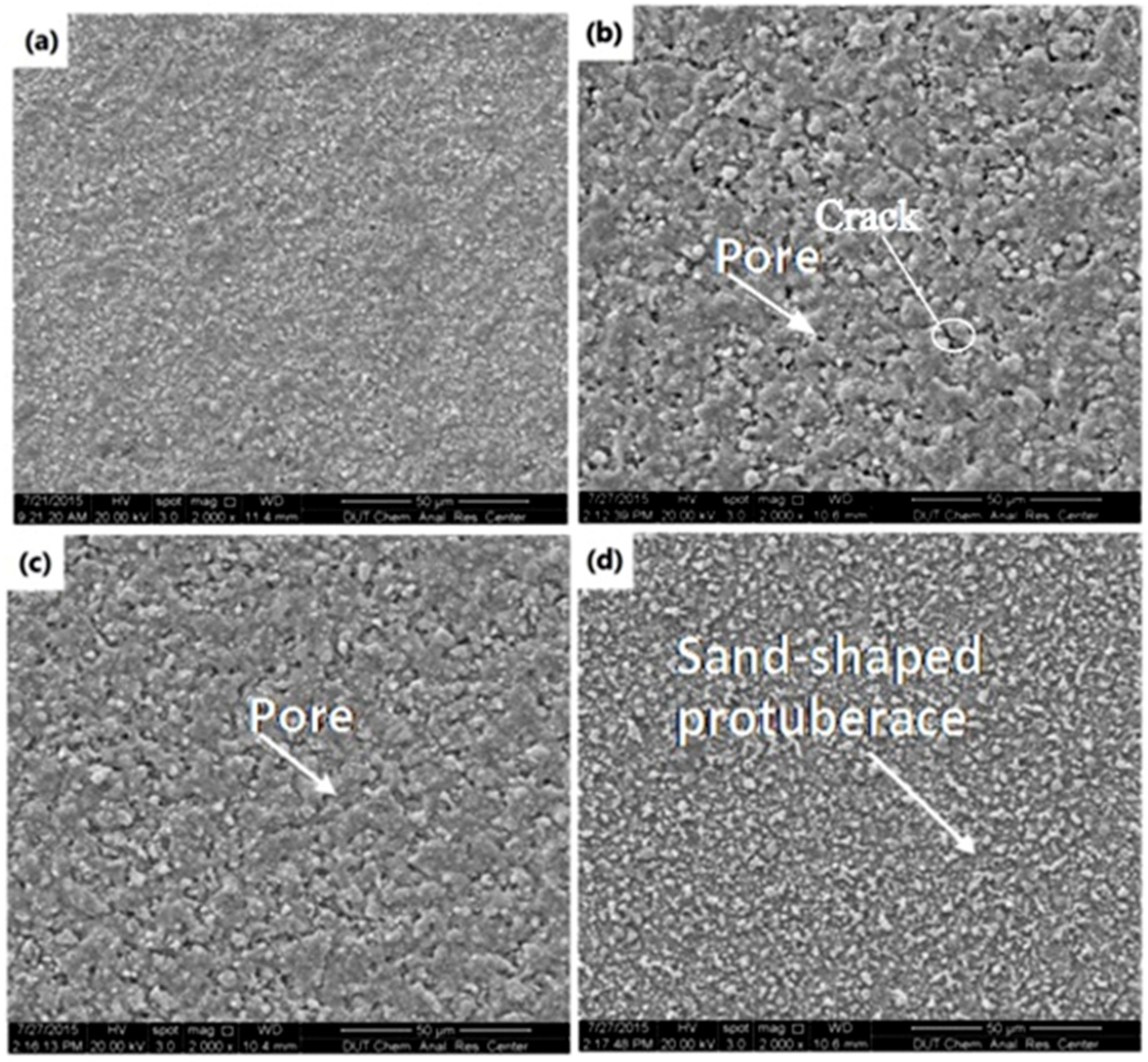
3.2. Impacts of Line-to-Line Pitch

3.3. Thin Film Deposition
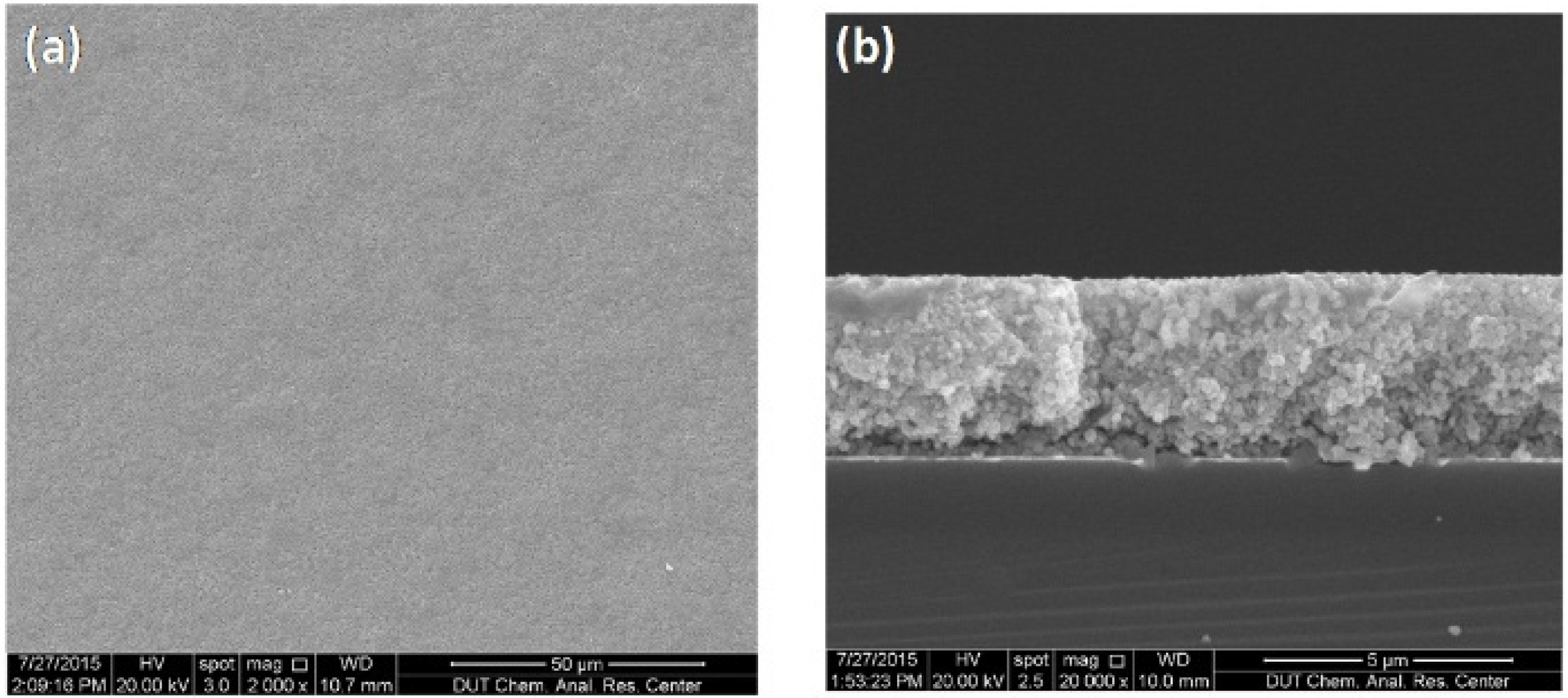
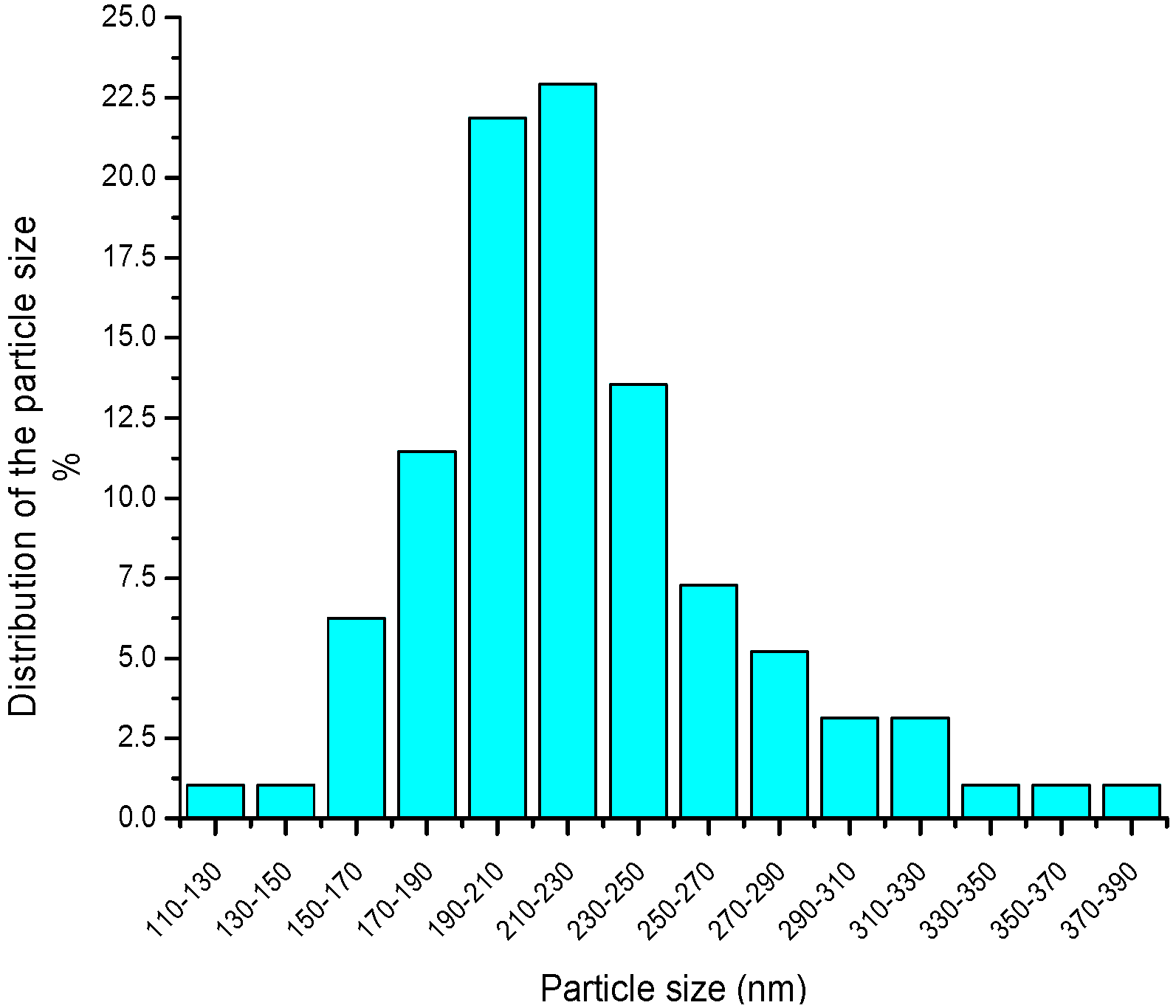
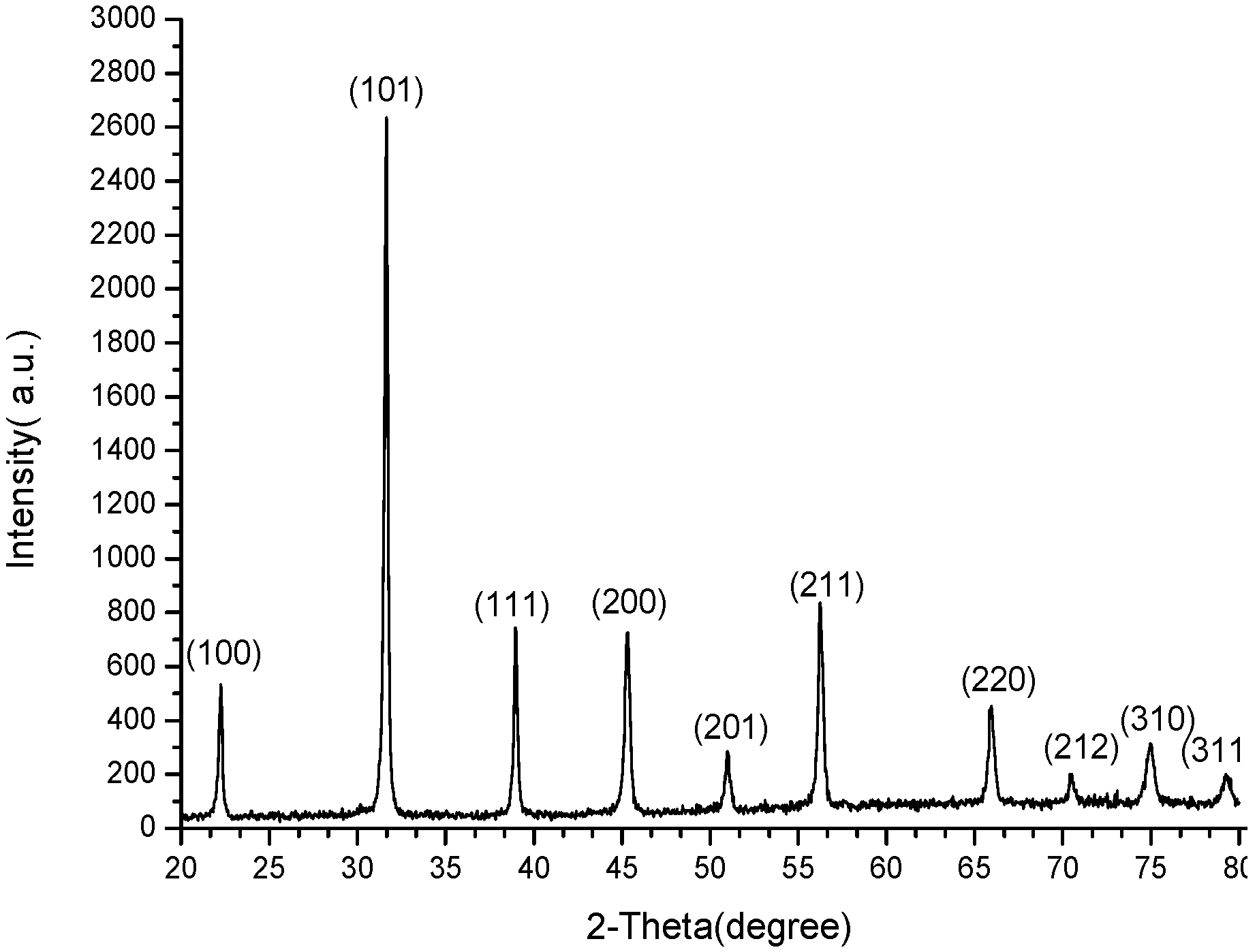
3.4. Dielectric Properties
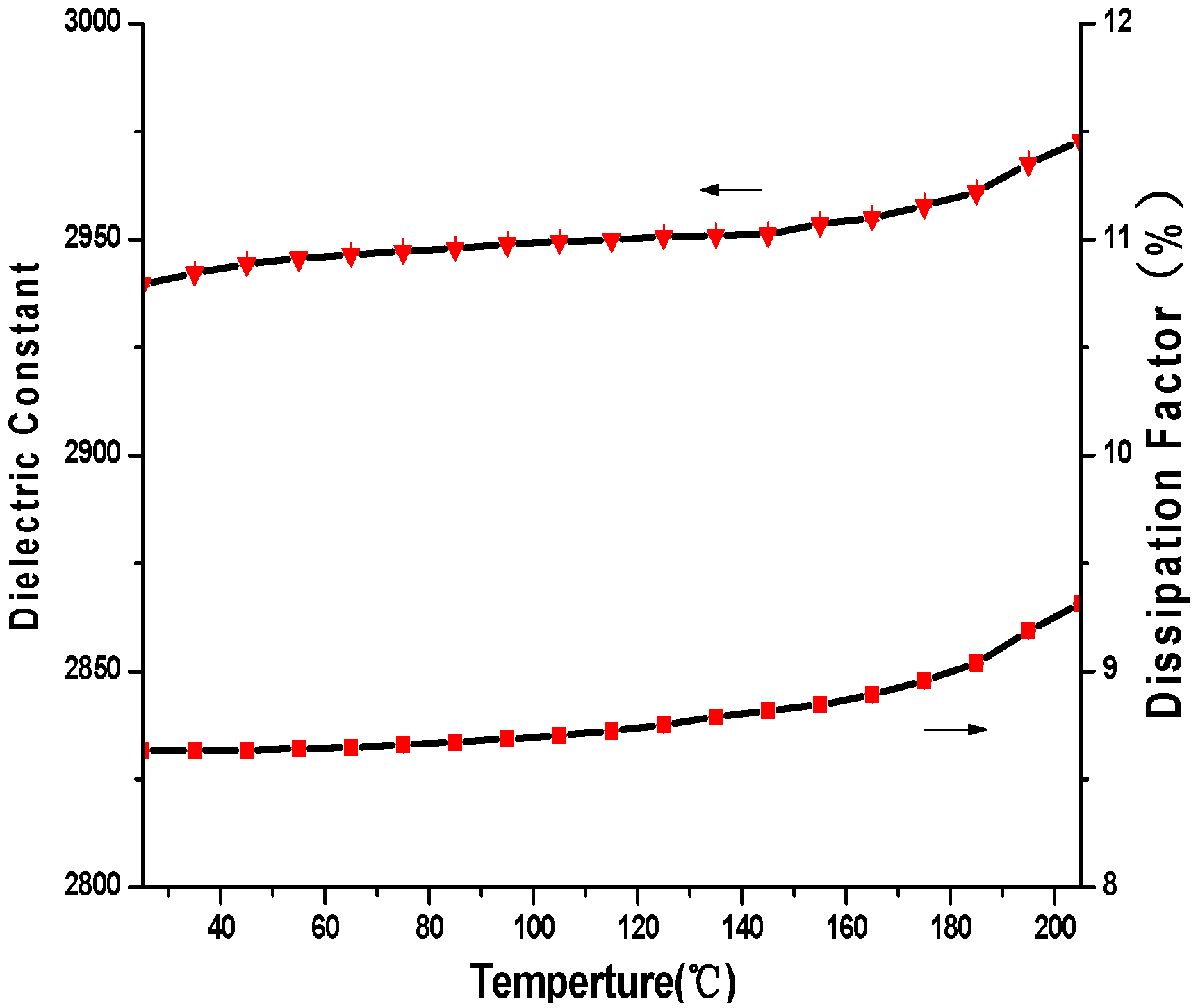
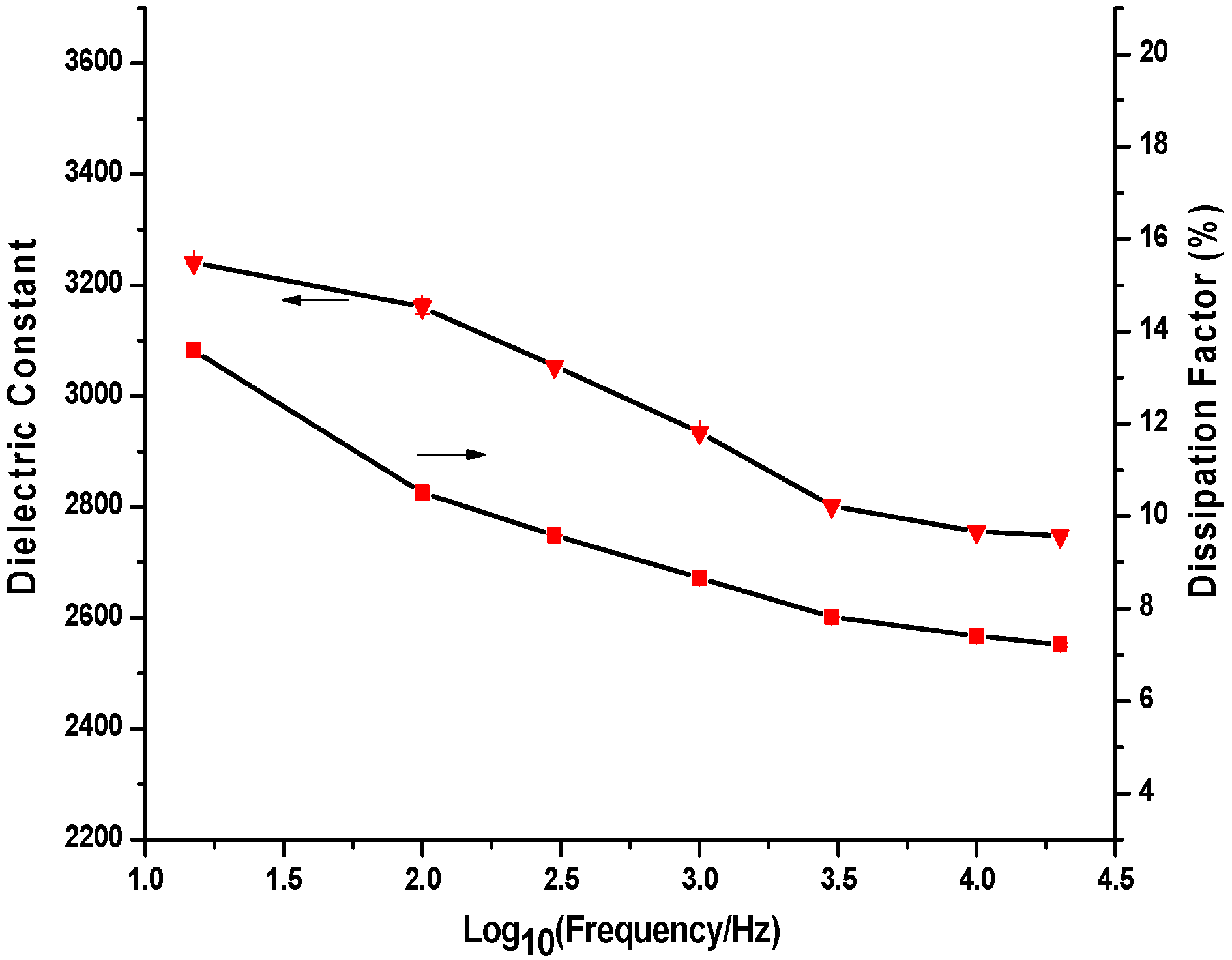
4. Conclusions
Acknowledgments
Author Contributions
Conflicts of Interest
References
- Requena, S.; Lacoul, S.; Strzhemechny, Y.M. Luminescent Properties of Surface Functionalized BaTiO3 Embedded in Poly(methyl methacrylate). Materials 2014, 7, 471–483. [Google Scholar] [CrossRef]
- Yuk, J.; Troczynski, T. Sol–gel BaTiO3 thin film for humidity sensors. Sens. Actuators B. 2003, 94, 290–293. [Google Scholar] [CrossRef]
- Avila, H.A.; Ramajo, L.A.; Reboredo, M.M.; Castro, M.S.; Parra, R. Hydrothermal synthesis of BaTiO3 from different Ti-precursors and microstructural and electrical properties of sintered samples with sub-micrometric grainsize. Ceram. Int. 2011, 37, 2383–2390. [Google Scholar] [CrossRef]
- Ashiri, R.; Nemati, A.; Sasani Ghamsari, M.; Sanjabi, S.; Aalipour, M. A modified method for barium titanate nano particles synthesis. Mater. Res. Bull. 2011, 46, 2291–2295. [Google Scholar] [CrossRef]
- Brennecka, G.L.; Ihlefeld, J.F.; Maria, J.P.; Tuttle, B.A.; Clem, P.G. Processing technologies for High-Permittivity thin films in capacitor applications. J. Am. Ceram. Soc. 2010, 93, 3935–3954. [Google Scholar] [CrossRef]
- Kao, C.F.; Yang, C.L. Preparation and electrical properties of barium titanate film by hydrothermal method. J. Eur. Ceram. Soc. 1999, 19, 1365–1368. [Google Scholar] [CrossRef]
- Wu, Y.J.; Li, J.; Tanaka, H.; Kuwabara, M. Preparation of nano-structured BaTiO3 thin film by electro-phoretic deposition and its characterization. J. Eur. Ceram. Soc. 2005, 25, 2041–2044. [Google Scholar] [CrossRef]
- Kawashima, S.; Nishida, M.; Ueda, I.; Ouchi, H. Ba(Zn1/3Ta2/3)O3 Ceramics with Low Dielectric Loss at Microwave Frequencies. J. Am. Ceram. Soc. 1983, 66, 421–423. [Google Scholar] [CrossRef]
- Ashiri, R.; Nemati, A.; Sasani Ghamsari, M. Crack-free nanostructured BaTiO3 thin films prepared by sol-gel dip-coating technique. Ceram. Int. 2014, 40, 8613–8619. [Google Scholar] [CrossRef]
- Alves, M.F.S.; Gotardo, R.A.M.; Cótica, L.F.; Santos, I.A.; Nascimento, W.J.; Garciab, D.; Eirasb, J.A. High density nanostructured BaTiO3 ceramics obtained under extreme conditions. Scripta Mater. 2012, 66, 1053–1056. [Google Scholar] [CrossRef]
- Duraisamy, N.; Muhammad, N.M.; Kim, H.C.; Jo, J.-D.; Choi, K.H. Fabrication of TiO2 thin film memristor device using electrohydrodynamic inkjet printing. Thin Solid Films. 2012, 520, 5070–5074. [Google Scholar] [CrossRef]
- Jaworek, A.; Krupa, A. Classification of the modes of EHD spraying. J. Aerosol Sci. 1999, 30, 873–893. [Google Scholar] [CrossRef]
- Wang, W.; Su, Y.W.; Chang, C.H. Inkjet printed chalcopyrite CuInxGa1-xSe2 thin film solar cells. Sol. Energy Mater. Sol. Cells 2011, 95, 2616–2620. [Google Scholar] [CrossRef]
- Fukuda, K.; Sekine, T.; Kobayashi, Y.; Kumaki, D.; Itoh, M.; Nagaoka, M.; Toda, T.; Saito, S.; Kurihara, M.; Sakamoto, M.; et al. Stable organic thin-film transistors using full solution-processing and low-temperature sintering silver nanoparticle inks. Org. Electron. 2012, 13, 1660–1664. [Google Scholar] [CrossRef]
- Yin, Z.P.; Huang, Y.A.; Bu, N.B.; Wang, X.M.; Xiong, Y.L. Inkjet printing for flexible electronics: Materials, processes and equipments. Chin. Sci. Bull. 2010, 55, 3383–3407. [Google Scholar] [CrossRef]
- Cai, W.; Fu, C.-L.; Gao, J.-C.; Guo, Q.; Deng, X.-L.; Zhang, C.-Y. Preparation and optical properties of barium titanate thin films. Phys. B Condens. Matter 2011, 406, 3583–3587. [Google Scholar] [CrossRef]
- Lee, B.; Zhang, J.-P. Preparation, structure evolution and dielectric properties of BaTiO3 thin films and powders by an aqueous sol-gel process. Thin Solid Films 2001, 388, 107–113. [Google Scholar] [CrossRef]
© 2016 by the authors; licensee MDPI, Basel, Switzerland. This article is an open access article distributed under the terms and conditions of the Creative Commons by Attribution (CC-BY) license (http://creativecommons.org/licenses/by/4.0/).
Share and Cite
Liang, J.; Li, P.; Wang, D.; Fang, X.; Ding, J.; Wu, J.; Tang, C. Fabrication of Crack-Free Barium Titanate Thin Film with High Dielectric Constant Using Sub-Micrometric Scale Layer-by-Layer E-Jet Deposition. Materials 2016, 9, 61. https://doi.org/10.3390/ma9010061
Liang J, Li P, Wang D, Fang X, Ding J, Wu J, Tang C. Fabrication of Crack-Free Barium Titanate Thin Film with High Dielectric Constant Using Sub-Micrometric Scale Layer-by-Layer E-Jet Deposition. Materials. 2016; 9(1):61. https://doi.org/10.3390/ma9010061
Chicago/Turabian StyleLiang, Junsheng, Pengfei Li, Dazhi Wang, Xu Fang, Jiahong Ding, Junxiong Wu, and Chang Tang. 2016. "Fabrication of Crack-Free Barium Titanate Thin Film with High Dielectric Constant Using Sub-Micrometric Scale Layer-by-Layer E-Jet Deposition" Materials 9, no. 1: 61. https://doi.org/10.3390/ma9010061
APA StyleLiang, J., Li, P., Wang, D., Fang, X., Ding, J., Wu, J., & Tang, C. (2016). Fabrication of Crack-Free Barium Titanate Thin Film with High Dielectric Constant Using Sub-Micrometric Scale Layer-by-Layer E-Jet Deposition. Materials, 9(1), 61. https://doi.org/10.3390/ma9010061





